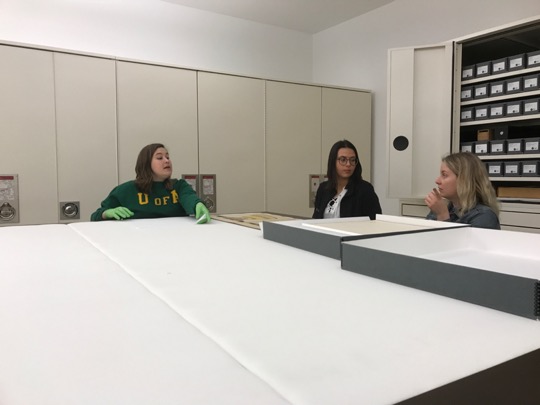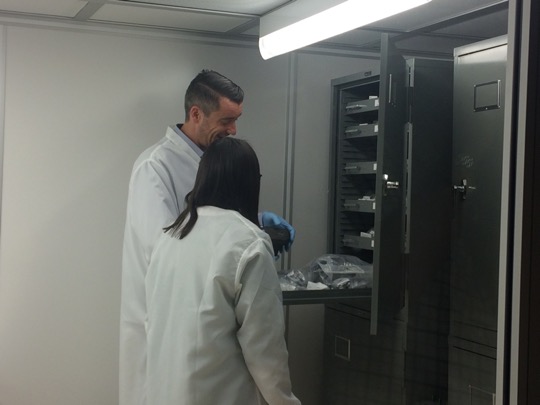UAM Summer Internship 2017: Into the University of Alberta Museums' Collections
Jean Middleton - 9 June 2017
On my first day, I was quickly introduced to the scope and diversity of the University’s museum collections. I was given a tour of some of the collections on campus and saw everything from the University of Alberta Art Collection (UAAC) including how the textiles, scrolls and other rare East Asian artifacts in the Mactaggart Collection are stored. Between collections, I learned many of the public artworks that University of Alberta students see every day are also part of the UAAC including, the mural West and North on the facade of the Education building, or a more recent addition to campus InScope next to the Li Ka Shing Centre for Health and Research Innovation. The tour also included some of the museums on campus that are open to the public such as the Paleontology Museum and the Mineralogy and Petrology Museum, both located in the Earth Sciences Building. As well as the current exhibition Misfits: Bodies, Dress and Sustainability at the Human Ecology Gallery.


I’ve also had the opportunity to learn some of the basics for the care and handling of objects and preventative conservation to prepare for the rest of summer. Care and handling knowledge is important for everyone who might be working up-close with the collections. I learned about the 10 agents of deterioration which are the main threats to museum objects and include fire, water, pollutants and physical forces. Physical forces include when people working with the objects are handling them, thus care and handling training teaches safe methods for handling objects in museum collections that are intuitive, but not always natural. Wearing the right gloves (cotton or nitrile or in very specific situations no gloves), using both hands and supporting an object’s centre of gravity and not passing an object to other people are just some of the ways to ensure the safety of objects in the collections. And it’s always important to remember only to handle objects when necessary.
Of course, you can’t spend all your time in museum collections (unfortunately) and my first couple of weeks have been filled with meetings with the whole University of Alberta Museums and Collections Services (MACS) team, learning how to use Mimsy (the database used by most collections on campus), catching up on museum practices handbooks and helping out with a tour of the Mactaggart Art Collection. I look forward to a variety of projects this summer and sharing them on this blog!